Confidence in politicians is rising in Sweden following the new restrictions introduced by the Swedish government. The media’s reporting on the pandemic is perceived to be more hyped and alarmist. These are some of the latest findings of a study being conducted by the non-profit organisation VA (Public & Science) to investigate communication about the coronavirus in Sweden.

In collaboration with researchers from the Karolinska Institute and Södertörn University, VA (Public & Science) is conducting a study of how people are receiving and interpreting information about the coronavirus and the ongoing pandemic.
On 16 November 2020, new restrictions were announced in Sweden, which included a sharp reduction in the allowed size of public gatherings. The following day, the eleventh wave of the survey commenced.
Greater confidence in politicians
Confidence in politicians has risen by 15 percentage points, which is the largest increase for any professional group since the survey began in March. It is mainly among those aged 30 or older that confidence in politicians has increased. For the other professional groups, no significant differences in confidence have occurred since October and the ranking among the professional groups remains unchanged. In November, the proportion of Swedes who have fairly or very high confidence is 92 percent for doctors/healthcare professionals, 86 percent for researchers, 66 percent for government officials, 36 percent for politicians and 22 percent for journalists.
Swedes’ perception of how in agreement various professionals groups are in their views on how Sweden is handling the pandemic has not changed between October and November. Doctors and healthcare professionals are perceived to be the most in agreement, followed by government officials, researchers, politicians and journalists.
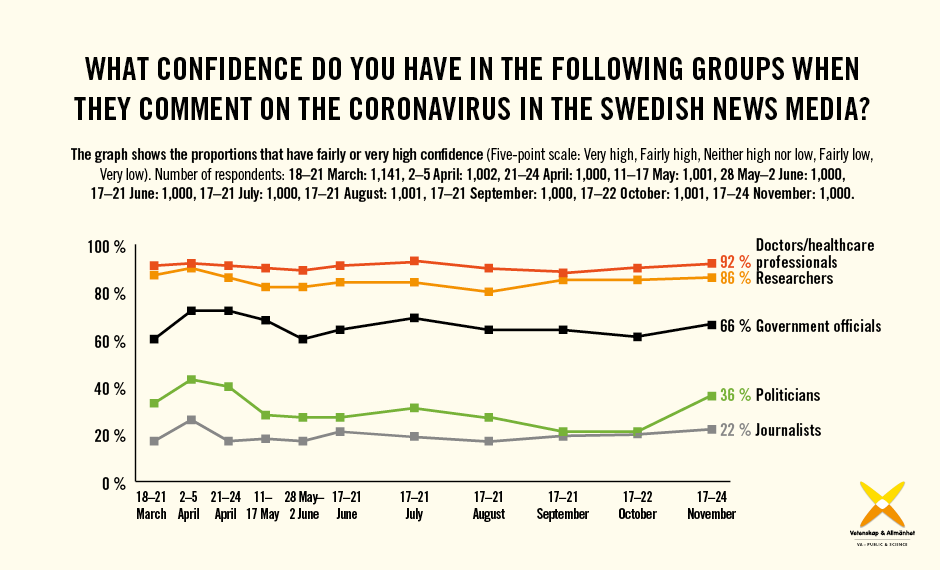
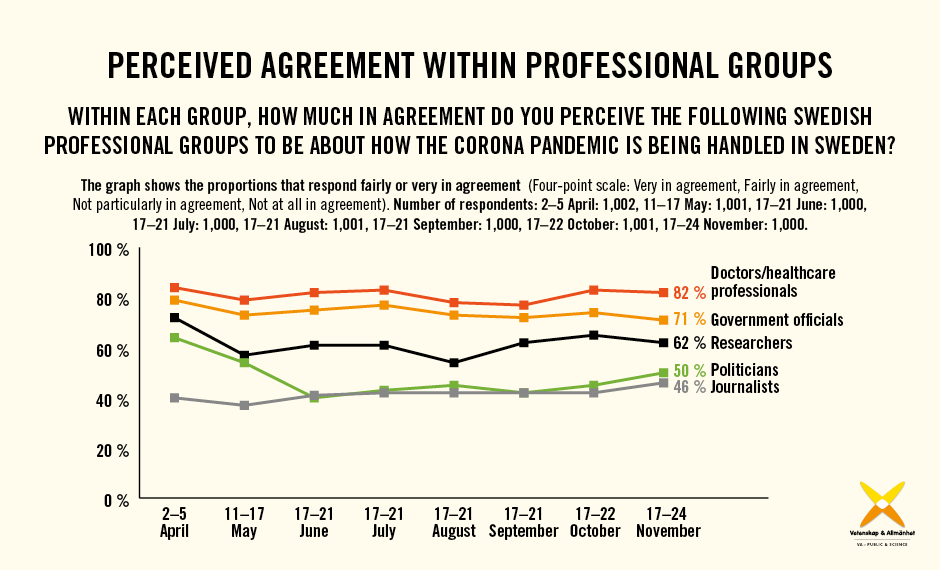
More Swedes are consuming news about the coronavirus
Swedish Television (SVT), TV4 and Swedish Radio are the news media that most Swedes have turned to for information about the coronavirus. These are the three media that have also seen the largest increase in consumption (between eight and nine percentage points) compared to October. As in previous waves of the survey, younger people (aged 18–29) are less likely to access most news media compared with other age groups. Younger people, however, consume other news media to a greater extent than older people.
Consumption of several media channels (for example SVT and Swedish Radio) fell during the summer months but has now returned to around the same levels as in the spring. On the other hand, other media, such as the newspapers Aftonbladet and Dagens Nyheter, have remained at roughly the same levels since March.
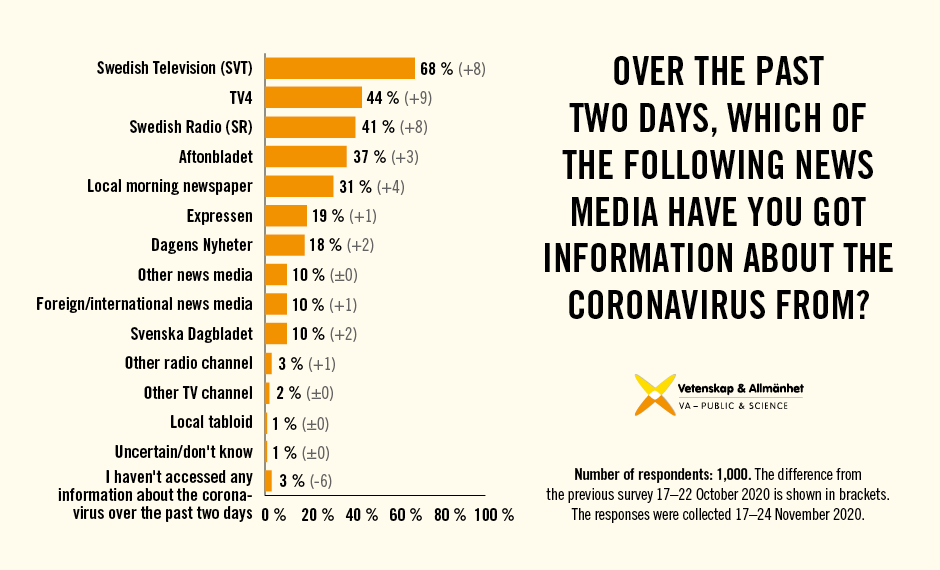
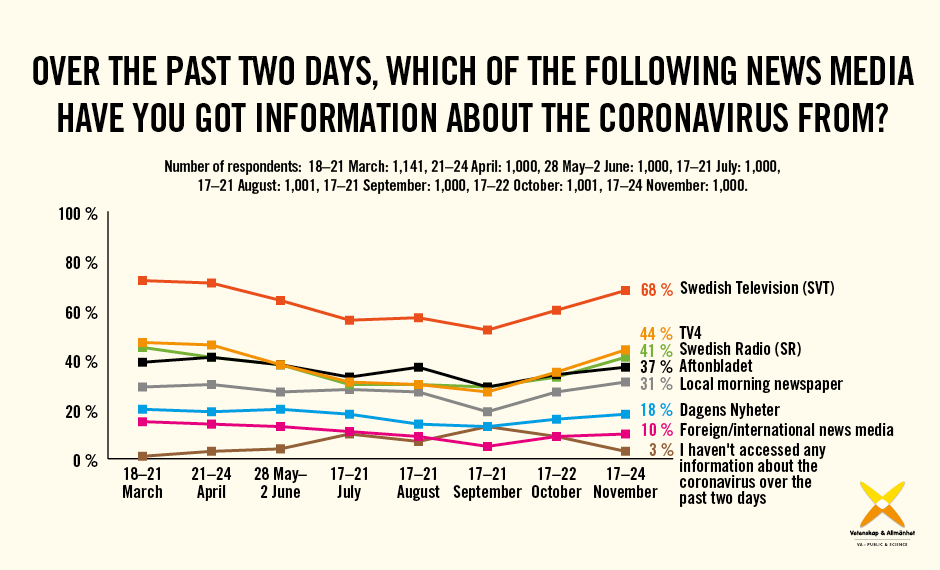
More hyped tone of reporting
Just over one in two Swedes (53 percent) perceives the tone of reporting on the coronavirus in the media as fairly or very hyped/alarmist, which is an increase of 17 percentage points since October. The proportion that perceives the tone as fairly or very watchful/cautious has at the same time decreased to seven percent, and those who think that the tone is neither hyped/alarmist nor watchful/cautious have dropped to 37 percent. It is more common for people without a university degree to perceive the tone as hyped/alarmist (60 percent) than those that have a high level of education (47 percent).
Confidence in the media’s reporting on the coronavirus has decreased slightly for most media, but is still higher than it was during the summer. The growing trend after the summer therefore appears to be broken. Swedes still have the greatest confidence in SVT (in which 73 percent have fairly or very high confidence), followed by Swedish Radio and TV4 (where the corresponding proportions are 68 and 47 percent respectively). The evening tabloids, Expressen and Aftonbladet, are the media that have the smallest proportion with high confidence (12 and 18 percent, respectively).
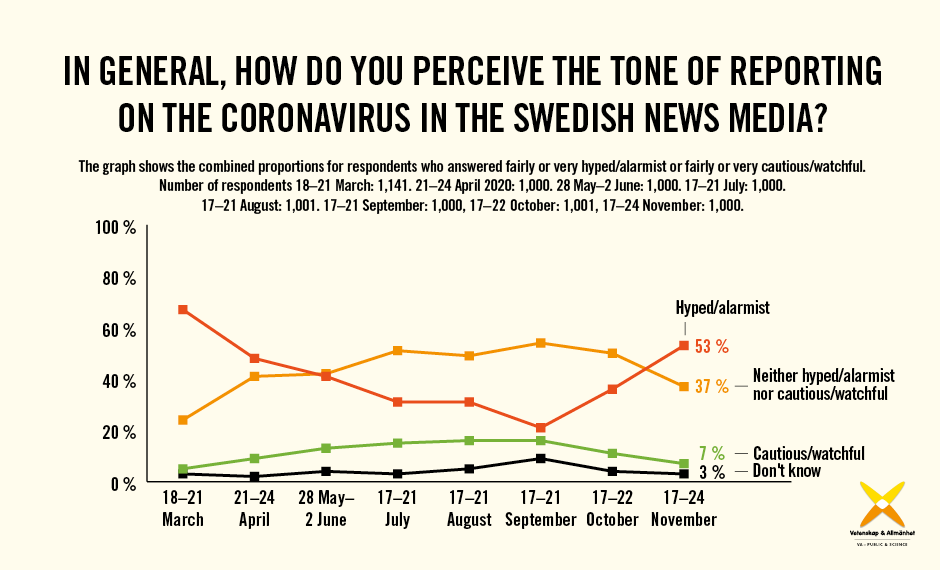
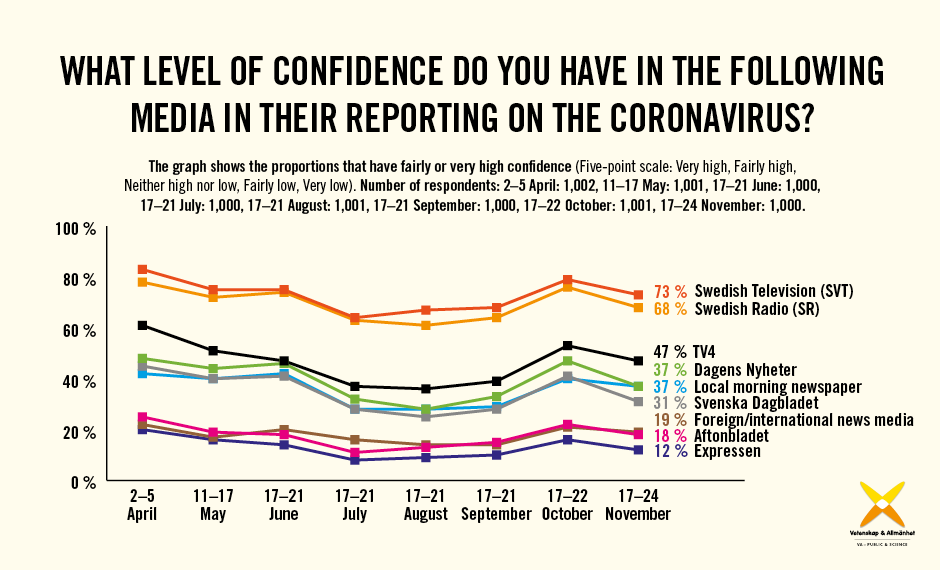
About the survey
The survey was conducted by Kantar Sifo and consisted of 1,000 interviews with a web panel based on random sampling. The interviews were conducted 17–24 November 2020. The results are weighted based on gender, age and region of residence.
In order to monitor the Swedish public’s news consumption, confidence in key professional groups and attitudes towards media reporting over time, we are conducting a number of studies during the course of the pandemic. We also plan to undertake a content analysis of reporting on the coronavirus in the Swedish media in order to map any changes in reporting during different phases, and how this relates to public attitudes during the same time period.
The study is being conducted with the support of the Anne-Marie and Gustaf Anders Foundation for Media Research, Karolinska Institute, LIF – the Swedish Association of the Pharmaceutical Industry, Södertörn University, the Wenner-Gren Foundations and the Swedish Research Council.
Read more about VA’s study and the results of the first, second, third, fourth, fifth, sixth, seventh, eighth, ninth and tenth waves of the study.

